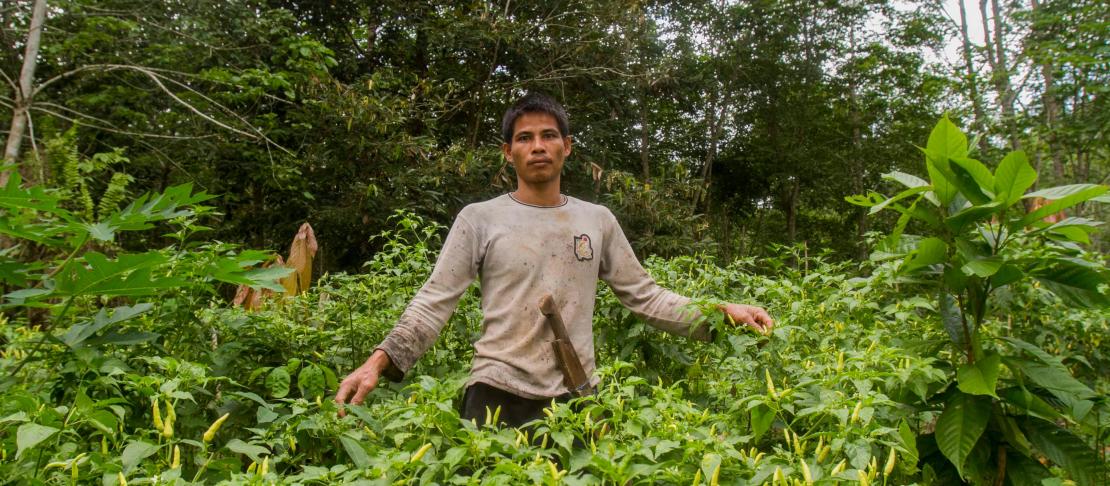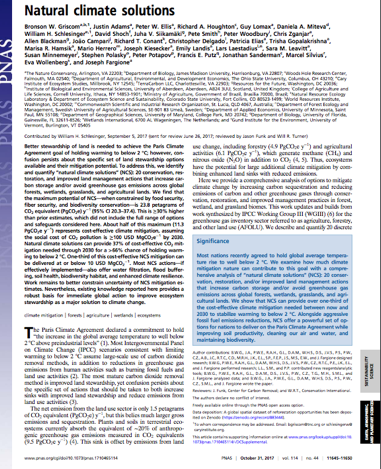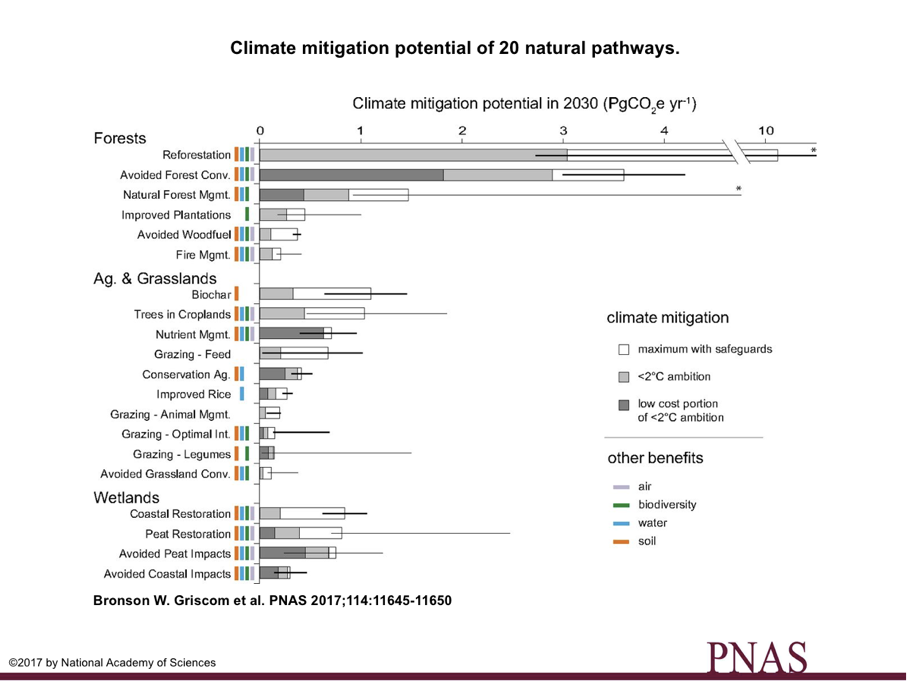Natural climate solutions are vital to combating climate change

Land management could cost-effectively account for one-third of the climate change mitigation needed to prevent a dangerous rise in global temperature.

Read the artice: Natural climate solutions
Comprehensive analysis shows that natural climate solutions could prevent dangerous climate change. Scientists from 18 institutions, including the University of Vermont (UVM), updated and built upon mitigation options shared in the Fifth Assessment Report of the United Nation’s Intergovernmental Panel for Climate Change (IPCC) to identify 20 natural climate solutions.
They defined natural climate solutions (NCS) as “conservation, restoration, and improved land management actions that increase carbon storage and/or avoid greenhouse gas emissions across global forests, wetlands, grasslands, and agricultural lands.”
 Figure 1 from Griscom et al.: Climate mitigation potential of 20 natural pathways. for reference year 2030. Light gray represents cost-effective mitigation levels assuming a global ambition to hold warming to <2 °C, and dark gray indicates low cost portions of <2 °C levels. Colored bars indicate ecosystem benefits in each pathway. See original.
Figure 1 from Griscom et al.: Climate mitigation potential of 20 natural pathways. for reference year 2030. Light gray represents cost-effective mitigation levels assuming a global ambition to hold warming to <2 °C, and dark gray indicates low cost portions of <2 °C levels. Colored bars indicate ecosystem benefits in each pathway. See original.
“This study shows the potential of mainstreaming climate concerns across all types of land uses to reduce the impacts of climate change,” Lini Wollenberg, co-author and Low Emissions Development research leader for the CGIAR Research Program on Climate Change, Agriculture and Food Security (CCAFS), said. “Realizing this potential will now require political will, finance and coordinated action on the ground,” she said.
The findings should boost large-scale conservation, restoration, and land management efforts as well as ensure food and fiber security and global fuel demands. But much work remains to be done, according to the article, to figure out how to implement the pathways in socially and culturally responsible ways.
Read the article:
Griscom B, Adams J, Ellis P, Houghton RA, Lomax G, Miteva D, Schlesinger W, Shoch D, Siikamäki JV, Smith P, Woodbury P, Zganjar C, Blackman A, Campan J, Conant R, Delgado C, Elias P, Gopalakrishna T, Hamsik MR, Herrero M, Kiesecker J, Landis E, Laestadius L, Leavitt SM, Minnemeyer S, Polasky S, Potapov P, Putz F, Sanderman J, Silvius M, Wollenberg E, Fargione J. 2017. Natural Climate solutions. PNAS, 114:11645-11650.
Read the press release by The Nature Conservancy: New Study Finds Nature is Vital to Beating Climate Change
Co-authors' institutions:
- Brazil, Ministry of Agriculture
- Cary Institute of Ecosystem Studies
- CGIAR Research Program on Climate Change and Food Security
- Colorado State University, Natural Resource Ecology Laboratory & Department of Ecosystem Science and Sustainability
- Commonwealth Scientific and Industrial Research Organization (CSIRO)
- Cornell University, College of Agriculture and Life Sciences
- James Madison University, Department of Biology
- The Nature Conservancy
- Ohio State University, Department of Agricultural, Environmental, and Development Economics
- Resources for the Future
- Swedish University of Agricultural Sciences, Department of Forest Ecology and Management
- TerraCarbon LLC
- University of Aberdeen, Institute of Biological and Environmental Sciences
- University of Maryland, Department of Geographical Sciences
- University of Minnesota, Department of Applied Economics University of Florida, Department of Biology
- University of Vermont, Gund Institute for Environment
- Wetlands International
The study was funded by the Doris Duke Charitable Foundation.
Sadie Shelton is an undergratuate student studying Natural Resource Ecology at the Rubenstein School of Environment and Natural Resourses at the University of Vermont.



